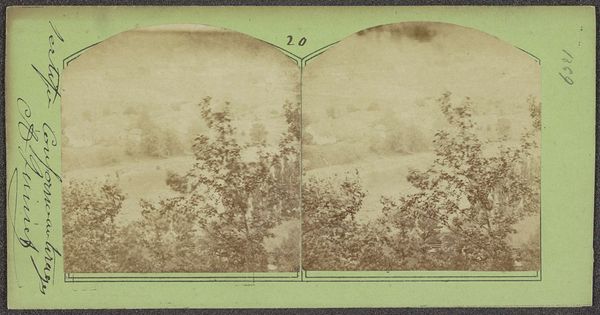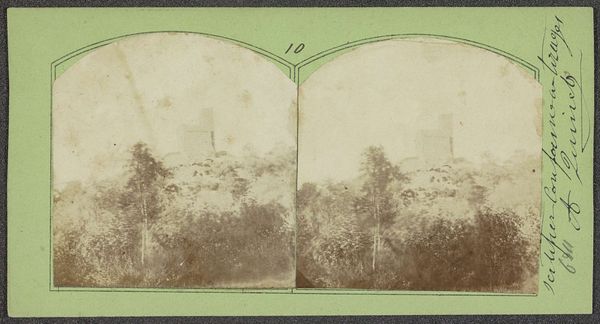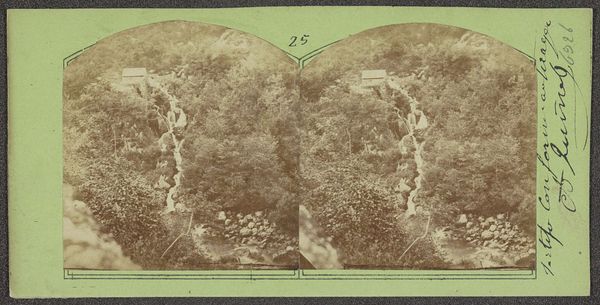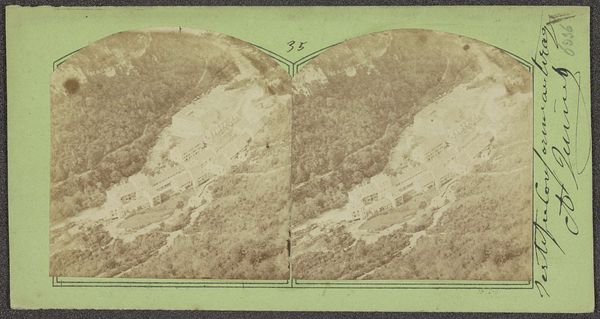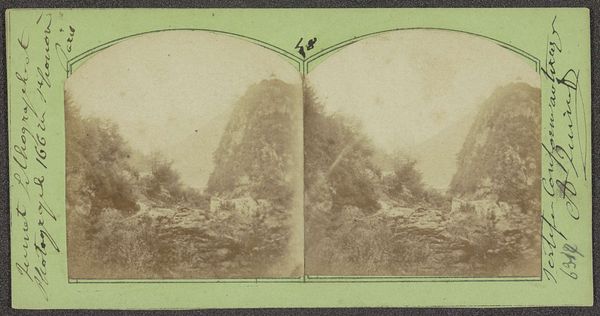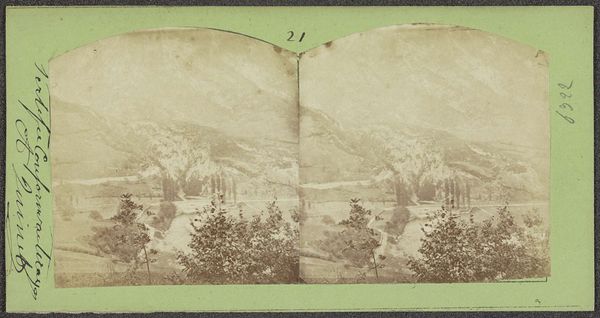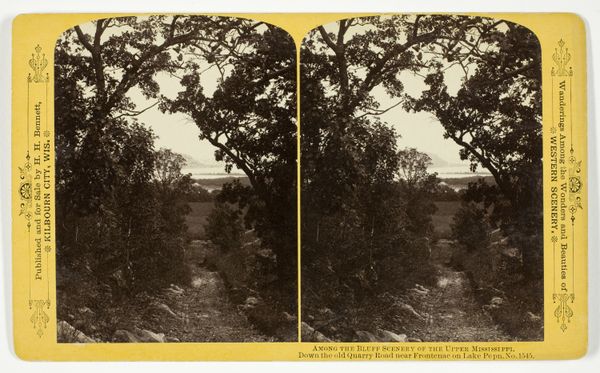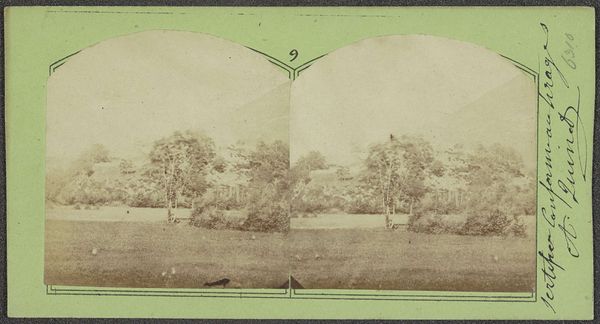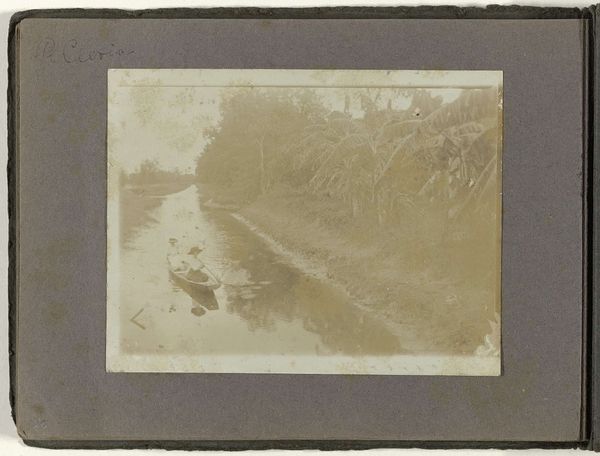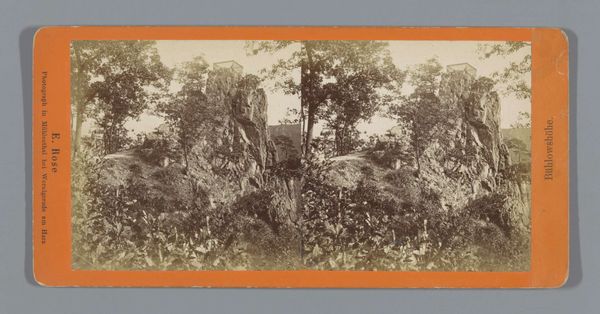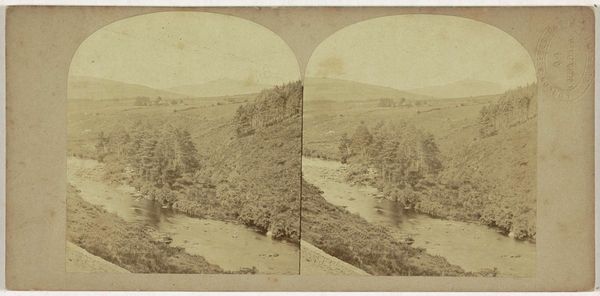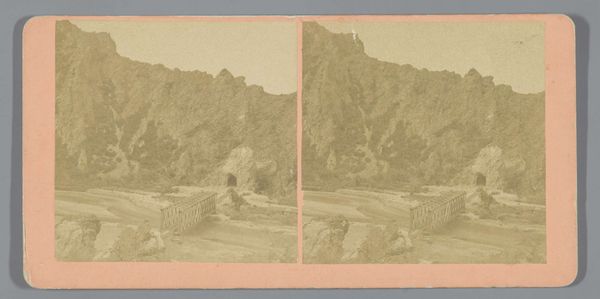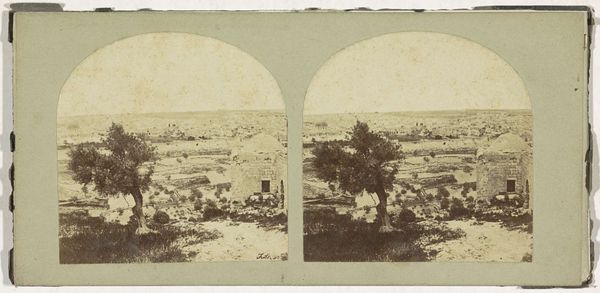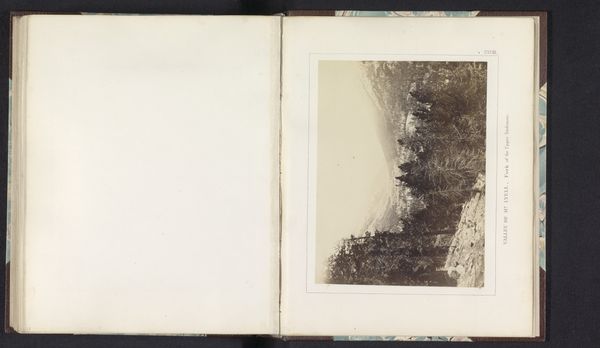
Kronkelende rivier omzoomd door bomen; met op de achtergrond ogenschijnlijk het gebouw van RP-F-2016-26-10 c. 1860 - 1880
0:00
0:00
photography, gelatin-silver-print
#
water colours
#
muted colour palette
#
landscape
#
photography
#
gelatin-silver-print
#
mixed media
Dimensions: height 90 mm, width 170 mm, height 74 mm, width 71 mm, height 74 mm, width 71 mm
Copyright: Rijks Museum: Open Domain
Curator: What a lovely spot, almost like stepping back in time! Achille Quinet, the artist, captured this scene of a winding river bordered by trees, likely somewhere between 1860 and 1880. The Rijksmuseum holds this gelatin-silver print; isn't it something? Editor: There’s a definite melancholic quality to it. The monochromatic tones evoke a strong sense of history, perhaps a wistful look at nature during a time of burgeoning industrialisation and colonial expansion. You can almost smell the wet earth. Curator: Yes, and consider the layering – the eye is drawn along the winding river towards the building nestled in the distance. Is it a hotel, or perhaps some kind of factory? I imagine it signifies the incursion of human structures upon this idealized pastoral vision. I mean, the texture almost sings—it certainly has depth and presence. Editor: Precisely! That architectural element subtly disrupts the romantic ideal of untouched nature. I can’t help but read the image through a critical lens, noting how such “picturesque” landscapes were often backdrops for unequal social structures and resource extraction. Who was this idyllic scene "for," and who benefitted from its representation? The perspective feels mediated and deliberate. Curator: Oh, definitely. You make an excellent point about whose narrative this represents, I'm utterly agreeing with it! But isn't there something beautifully timeless, even subversive, in its stillness? Look how light filters through the foliage! Quinet was really playing with how photography captures both tangible and the ephemeral quality of water. The "Kronkelende Rivier" offers to everyone in the future centuries to get some glimpse, some scent. Editor: Agreed. While I analyze its socio-historical implications, there's undeniable power in how he's framed the river itself - as a symbol of fluidity, perhaps resistance? It's a striking juxtaposition of control and untamed freedom that really grabs my intention here. Curator: Absolutely. So, while it is an artifact, laden with context and, potentially, ideological baggage, at the core it remains a compelling work of art. Editor: Exactly. By interrogating images like this, we gain a clearer understanding of the world and our relationship with it. The real value, maybe, is what it asks from us: what’s the landscape mean to *you* today?
Comments
No comments
Be the first to comment and join the conversation on the ultimate creative platform.
